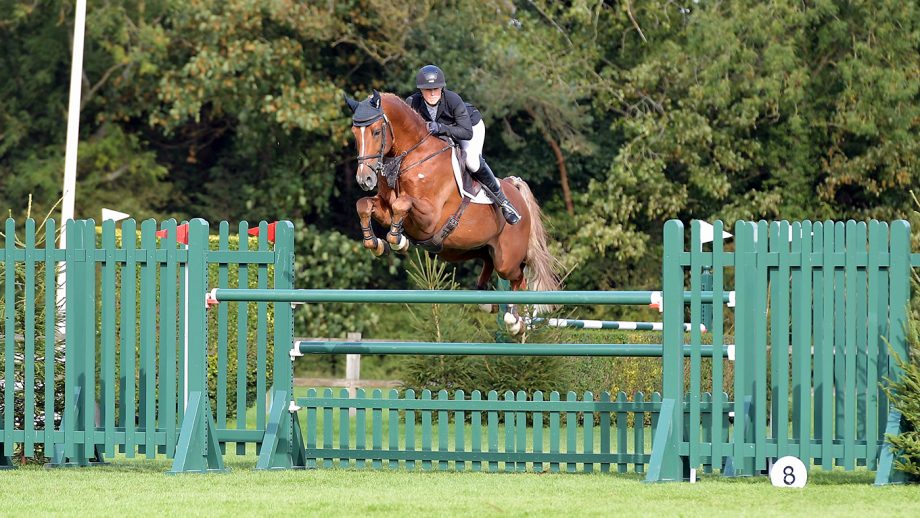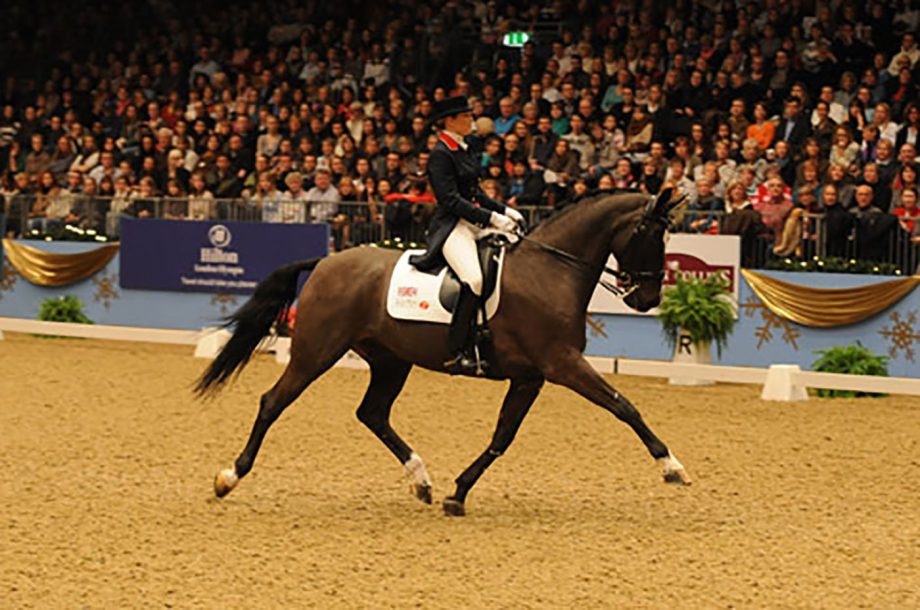The international showjumper talks us through this multi-fence workout which she uses with both her younger and more experienced horses
#SundaySchool: how to improve control with Blyth Tait

Olympic event rider Blyth Tait shares his expertise on how to improve horse control using a jumping exercise at home, honing power and direction…
How to improve horse control
Aim
Simple exercises are often the most effective. This one involves building two fences — a vertical and a parallel — on a four- or five- stride (20-24m) related distance, ideally down the centre line of the school. The horse is circled in between the two fences.
Many of the horse’s attributes will be tested, from his suppleness and balance to his ability to bend and maintain a rhythm.
The ultimate aim is to achieve greater engagement, impulsion, control, rhythm and smoothness. The horse learns about patience, cantering in different gears and how to jump with contained power rather than speed. For the rider the exercise is all about sitting still, communicating with clarity and thinking ahead.
Exercise
1. Approach the vertical in “first gear” — a controlled, collected canter. Ride as small a circle as possible — ideally 10-12m — in the same collected canter after the vertical. While riding the circle, the rider must maintain the horse’s balance through the hand. They also need to be active with their leg to get the horse’s hindleg underneath it. Focus too on looking ahead and controlling the horse’s shoulder.
2. On completion of the circle, allow the horse to move up to “third gear” and lengthen his stride. The rider’s hand should move forward and soften to “release the beast” as the horse opens up his frame over the parallel.
3. Reverse the process and jump the spread first — a different exercise requiring more control. Start with an open stride for the parallel. On landing, ride a circle in a collected, balanced canter, with the horse bent around the inside leg. Maintain this pace to the vertical, allowing the fence to come to the horse.
4. If you lack room, build the fences against a wall or the side of the school. This makes the exercise harder in that the rider has to be more proactive in ensuring that the horse lands on the correct lead.
Article continues below…
You might also be interested in:

#SundaySchool: the showjumping ‘gym’ with Holly Smith

#SundaySchool: how to improve your horse’s medium trot
Follow grand prix dressage rider Anna Ross’ tips for improving the medium trot in our new regular Sunday evening training

Enjoy extra savings on Horse & Hound delivered to your door
If you want to keep up with the latest from the equestrian world without leaving home, grab a H&H subscription
Tips and pitfalls
- The rider may not always be thinking ahead. It is important to remain proactive throughout to be able to show the horse what to do.
- The horse must be on the aids and listening to the rider or he will be tempted to rush the fences.
- On the circle, the rider needs to keep active with their leg because it is all too easy for the horse to fall into “tranter” (trot/canter). If the horse drops behind the leg, he may stop at the parallel as he comes off the circle.
- If starting the exercise with the parallel, don’t over-ride it or the horse will be unable to perform the circle.
- Resist performing the exercise too often. For a youngster, six times twice a week is probably ideal.
For all the latest news analysis, competition reports, interviews, features and much more, don’t miss Horse & Hound magazine, on sale every Thursday.

